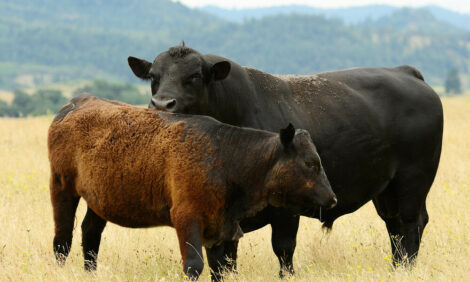



Livestock Advice on Hurricane Aftermath
TEXAS, US - Immediate danger to livestock from hurricanes comes from drowning due to storm surges and accumulated rainfall. Injury can occur from flying debris or electric shock from downed power lines.“After the hurricane, danger to livestock can come from several sources,” said Dr. Joe Paschal, AgriLife Extension beef cattle specialist.
As soon as it is safe, livestock owners should check on the condition of their animals and move them out of flooded areas onto dry or covered areas if possible. Then check for injury and render first aid for minor injuries to livestock.
“Be prepared to render some form of aid until the veterinarian can arrive,” Paschal said. “Remember they may have damage to their homes and buildings or livestock, too, or they may have more urgent cases to attend to first. When you call the veterinarian, be explicit in the description of the injury and provide as much detail as possible.”
Stressed animals should be given clean feed or hay and water, he said. Animals that have not had access to feed for one or more days should be given a little feed the first few days, gradually increasing it over a week to full feed.
Animals that eat hay should be allowed access to clean hay even if it is wet, he added. And watch for signs of sickness. Pneumonia will most likely develop if the animals have been in water and cold. Listen for coughing, look for runny noses, crusty eyes, hard breathing and lowered heads, and get treatment for these animals as soon as possible, he said.
“Do not feed wet or moldy feed to any animal,” Paschal said. “Wet hay, as long as it is not moldy, will be good filler. Dry feed will be best for all classes of livestock, but give all feed in moderation."
High water will drive venomous snakes to higher ground as well.
“Usually, animals are bitten on the head or neck area, but smaller livestock can be bitten anywhere on their body the snake can reach,” Paschal said. “Smaller animals are more susceptible to snakebite since the dose of venom is greater relative to body size. If you suspect snakebite on a small animal contact your veterinarian quickly.”
Venomous spiders are also of concern, but most of their bites are not fatal to livestock.
“External parasites, especially mosquitoes, will be a major problem,” Paschal said. “There are a number of commercial products available for treatment of individual animals or small areas. However, for larger livestock, their only relief will be dry pastures with access to a good wind. The best defense is to ensure livestock are vaccinated against the major diseases or given a booster as soon as possible."
Paschal added that there are several commercial products to apply to livestock to combat the ticks that also move to higher ground and onto more livestock.
“Internal parasites may become an issue over time, especially if cattle from several sources are commingled and many pastures are flooded,” Paschal said. “This will not be an immediate problem due to the extended lifecycle of most of the internal parasites. You should visit with your veterinarian about future treatment.”
Water quality in populated areas will also be an issue, he said, especially for livestock that drink from streams, bayous, and tanks that fill with rain runoff. If possible, water livestock from cleaner water sources until these can be evaluated.
“If there are dead animals on your property, they need to be disposed of properly if possible,” Paschal said. “Dead animals cannot be burned without permission of the Texas Environmental Quality Commission, but this might be waived in the case of a natural disaster.
“Usually one or a few animals can be allowed to decompose above ground if burial is not feasible, they are not a human health hazard and do not obstruct traffic, or are not in a waterway or drainage area.
“Whenever possible, livestock owners should either evacuate their animals, if only a few, to a safe area or move their animals to high ground that has some protection from the wind and rain.”
To prepare for disasters, livestock owners should have an inventory list of their animals, identification numbers or photos, and any veterinary records that might be useful, as well as a first aid kit.
These recommendations are just a partial list of actions that livestock owners should be aware of in a post-hurricane event and do not cover several species-specific concerns, Paschal said.
Further Reading
| - | You can find hurricane preparedness and recovery information on the Texas Extension Disaster and Emergency Network, Texas EDEN, by clicking here. |
TheCattleSite News Desk


